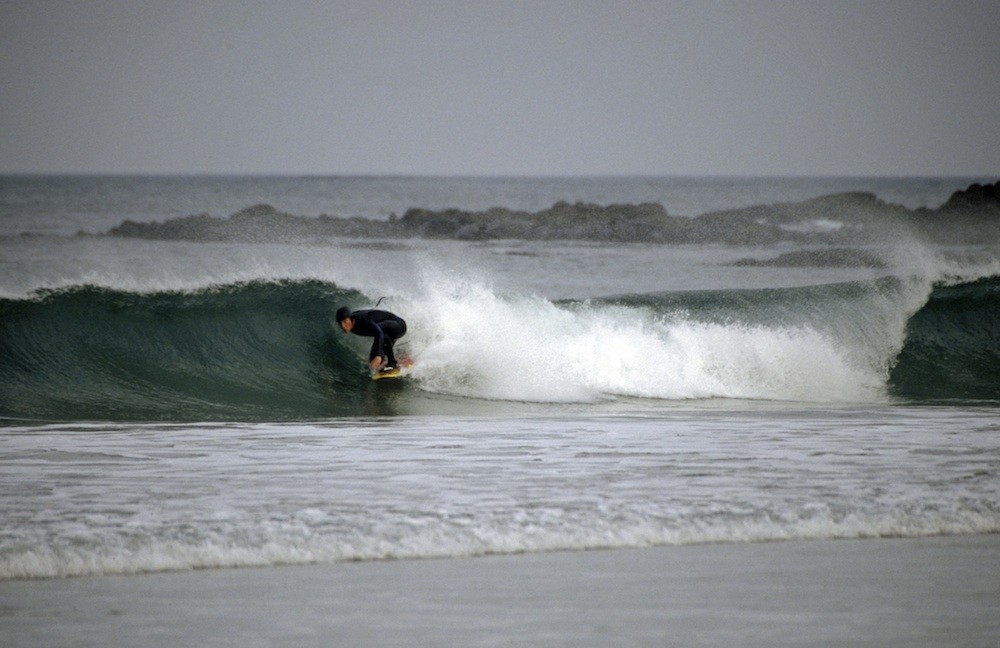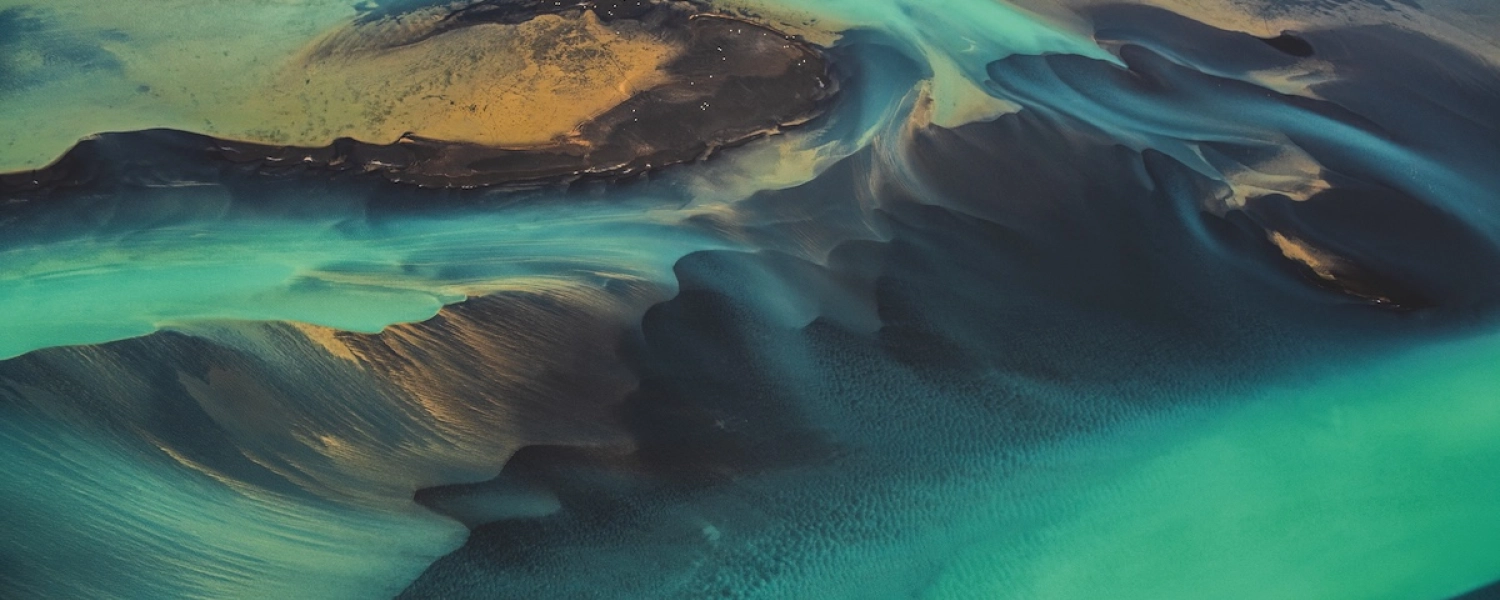- Details
- Written by: Mike Walker
When surfers refer to the ‘North Shore’ they usually mean that of Oahu in Hawaii. But these days there’s a ‘new’ north shore on the scene which has waves almost as challenging as those of the Hawaiian islands.
They just happen to be a tad colder. Because we’re talking about Scotland’s north shore, which, while not quite frigid enough to have icebergs bashing into the beach, is not the place you’re ever going to be surfing in a pair of board shorts.
The islands of the Outer Hebrides are something of a cold water surfer’s paradise with their white beaches, aquamarine waters and great waves; and there’s even a well-established surf school in Stornoway for novice surfers who really do want to get away from it all in their bid to conquer the waves.
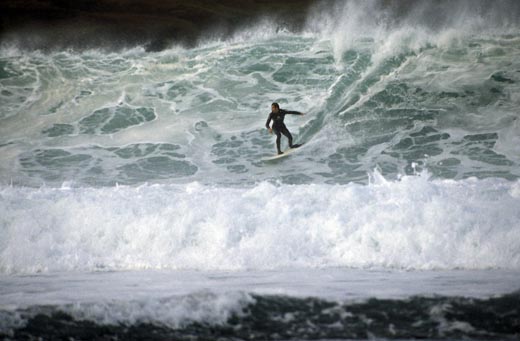
But over the last few years it’s the stretch of coastline between John o’ Groats and Cape Wrath that has moved to centre stage in the world of cold water surfing. Events like the O’Neill Cold Water Classic held in the Thurso area in recent years have confirmed to the rest of the world that Scotland can justly lay claim to having the biggest, the best, and the most consistent surf in Britain.
Those surfers who are prepared to head so far north that they’ll experience almost 24 hours of daylight in midsummer (Thurso is almost on the same latitude as southern Alaska) find a unique environment in which to surf — big, fast, powerful reef and beach breaks, superb unspoilt scenery, and with the exception of the Thurso/Brimms Ness area, waves that are generally both uncrowded and secluded. Which for most surfers who aren’t concerned about having to wear a thick wetsuit is about as much as you could hope for.
Scottish waves emanate mainly from Atlantic lows that move in from the west, pass to the north of the country, and then track off in the general direction of Norway and/or the Arctic – a pretty regular event year round, so consistent surf is another of Scotland’s great features.
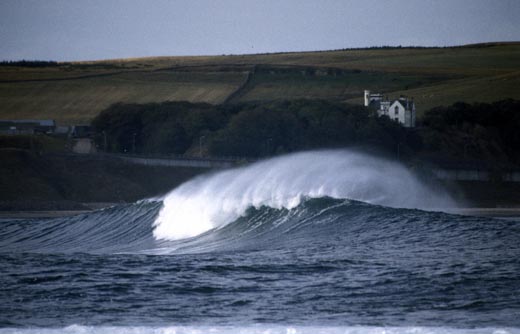
And the water is probably not as cold as you think. Average water temperatures vary between 4–7°C in winter and 13–16°C in summer thanks to the effect of the Gulf Stream.
For the best combination of surf and weather, the time to visit is late summer to early autumn, when the air temperature is still reasonably mild, the sea’s at its ‘warmest’, and the first of the consistent autumn swells are beginning to roll in.
That said, winter has the most consistent and biggest waves (triple overhead on the north coast is not uncommon), but the cold is a very serious consideration and restricts the amount of time you can stay in the water as well as the number of sessions you can fit into one day. Also, daylight hours are short — eight hours at most. Conversely, in mid-summer you can theoretically surf for up to 21–22 hours a day in the far north.
Although most articles on surfing in Scotland will emphasise the generally uncrowded nature of most Scottish breaks, that’s not to say that the standard of surfing among locals is not high (look at Thurso’s Chris Noble, for instance – a man who looks calm and relaxed in 10-ft plus Thurso East can be said to have it pretty well wired). And there are ever increasing numbers of visiting surfers, so while you may not have the waves totally to yourself, it will certainly be less crowded than most breaks south of the border, and the atmosphere out in the water is invariably friendly.
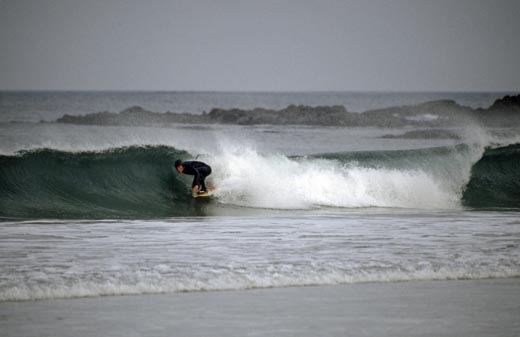
There’s no point surfing in Scotland unless you’ve got a really good wetsuit though. In winter you’ll need the best winter steamer you can get, along with boots, gloves, and a hood. In summer, if you’re not used to cold water, you’ll probably still feel more comfortable in a winter steamer and boots.
The scenery, like the surf, is exceptional. It can only be the rainy climate that has prevented the Scottish Highlands to the south from being ranked alongside regions such as British Columbia and New Zealand for their sensational natural beauty – take a day or two out from surfing to visit the mountains. If the sun is shining they’re awesome. If you’re there in winter you could even combine a surf and ski holiday!
And consider stopping off in Edinburgh or Glasgow on your way to or from the waves - two exciting, vibrant cities which are as far removed from the northern solitude as you could get – and for surfers from the south of the UK they also make good access points to the waves that will save you the long drive north.
Essential information
A good website for accommodation info is www.visitscotland.com, which also has info on the burgeoning Scottish surf scene and other outdoor stuff. For surf conditions afore ye go, check out www.magicseaweed.com.
For surf lessons in Scotland check out www.thursosurf.co.uk in Thurso or www.surflewis.co.uk in Stornoway.
